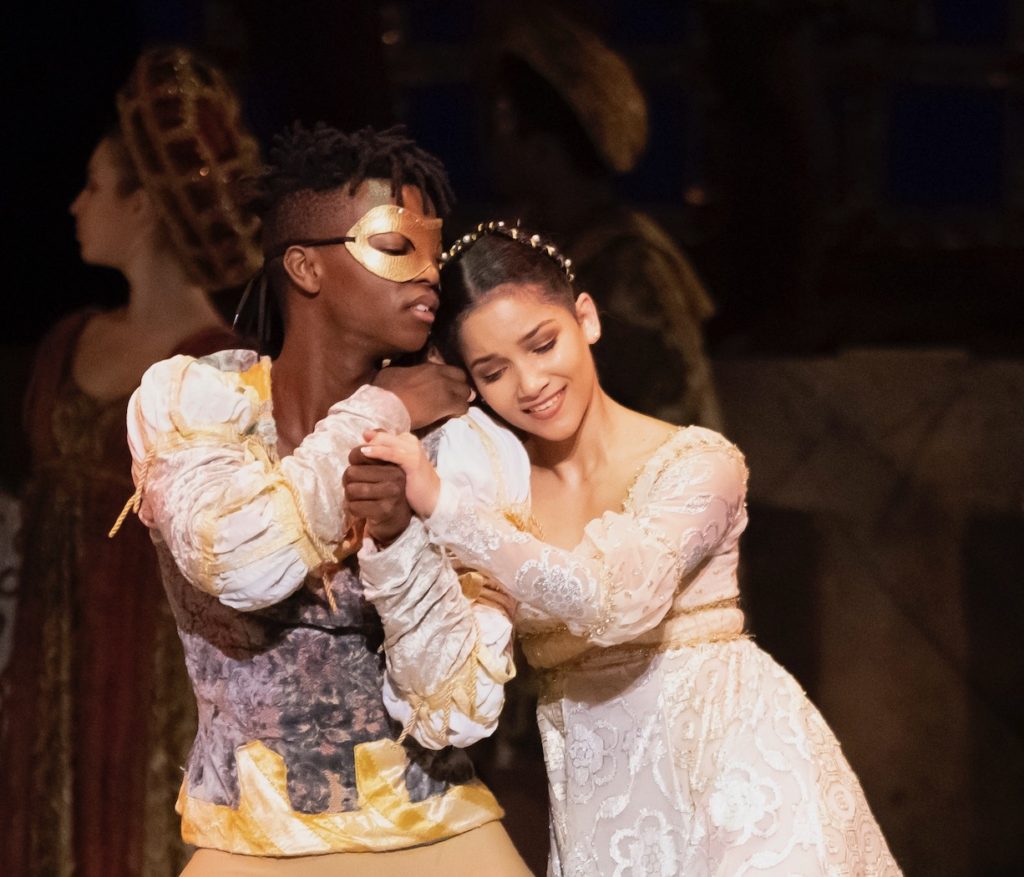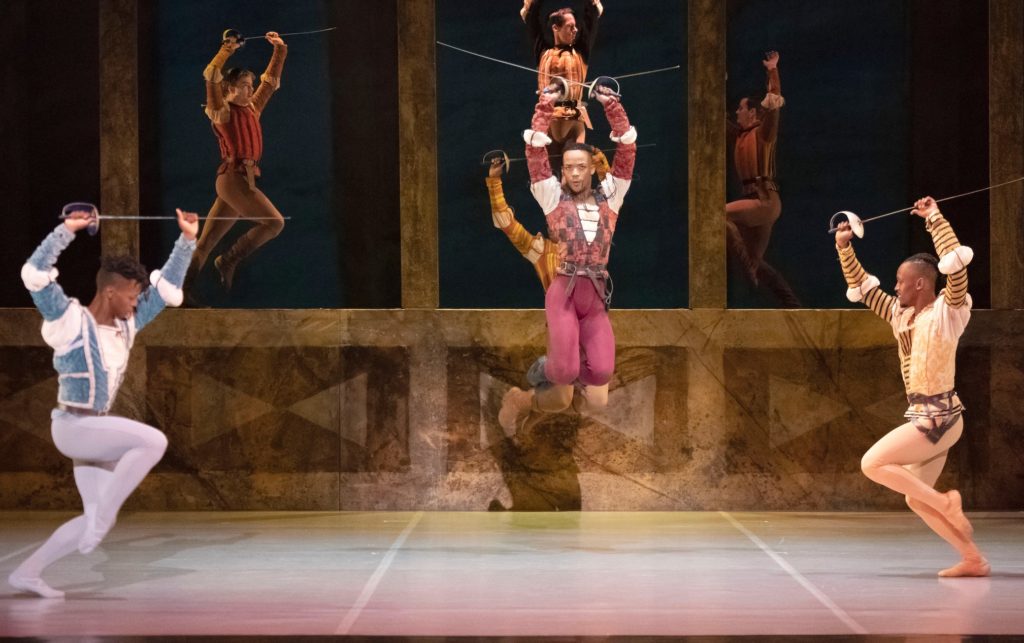Cape Town’s Romeo and Juliet: Siphe November returns, one night only - Vancouver Ballet Society
- Home
- Reviews 2020 - 2023
- Cape Town’s Romeo and Juliet: Siphe November returns, one night only

By Maggie Foyer
Siphesihle November, who left South Africa at age 11 to follow his dream, returned to dance Romeo with Cape Town City Ballet at Artscape Opera House on August 25. The return to his homeland required the generosity of sponsors and the coordinating of busy timetables for Cape Town City Ballet and the National Ballet of Canada, where he is a principal dancer. But it happened – for one night only!
The dynamic leadership of Debbie Turner has given the Cape Town company something of a renaissance, building diverse audiences with a welcome proportion of young people. This performance of Romeo and Juliet had the added thrill of Siphe’s family and friends, bussed in from nearby Zolani, coming to champion their hero. His entrance was given a resounding cheer and the curtain calls were tumultuous.

November and his Juliet, Chanté Daniels, both young and of slight stature, are new to the roles and look just like the teenagers of Shakespeare’s play. Juliet is eager and excited at the prospect of meeting her intended, Paris, while Romeo’s heart is already given to Rosalind. This changes instantly as the two collide at the masked ball, and the entire ballroom freezes to give the moment full value before Mercutio (Fanelo Ndweni) provides a lively distraction to divert an angry Tybalt (Bhungane Mehlomakulu).
When the lovers later meet in a secluded area, Romeo declares his passion, whipping off his mask and kneeling before her with arms thrown wide. November has the presence of a young prince, with graceful ports de bras and an aesthetically elegant line. However, it’s when he soars into a series of jetés, his coordination seeming instinctive and inherent, that you begin to understand the quality that makes him so special.
The market scenes give excellent opportunities for Romeo and Mercutio to show their technical prowess, with added moments of comedy and the drama of the sword fights. The lovers’ pas de deux, notably in the garden scene, had some tricky lifts that would have benefitted from more rehearsal time, but none of this detracted from the very real magic between the two dancers.

Frank Staff, a South African choreographer who forged an early career with Ballet Rambert, created this Romeo and Juliet in 1964. It was first remounted in 1974 by Veronica Paeper, the original Juliet, with sumptuous designs by Peter Cazelet, a Capetonian with an international design portfolio. Staff’s ballet was not influenced by the well-known versions of John Cranko and Kenneth MacMillan, and offers interesting alternative readings.
Daniels is a spirited Juliet, unfazed by the grandeur of the ballroom, but, realizing the enormity of the problems the young lovers face, she runs to Friar Lawrence for help. A brief dream sequence with Romeo is transformed into a moment of horror as the ghosts of Mercutio and Tybalt appear, seeming to welcome her to their world of shadows. A vision of the foppish Paris convinces her to accept the potion from the Friar as an escape from their planned marriage.
The dramatic Prokofiev music used by later choreographers for the distraught Lady Capulet after the death of Tybalt is given to Romeo. November dances a fierce, anguished solo, then drags the bodies of his friend, Mercutio, and his enemy, Tybalt, to lay them side by side and entwine their arms, joining them in death as he was unable to in life. He tears off the crucifix from his neck and lays it on the bodies before running for his life. The crowd turns their backs on the scene, keening rhythmically, capturing the depth of the tragedy that has unfolded.
November’s success story began 15 years ago when Fiona Sargeant, working with the outreach project Dance for All, started ballet classes in rural Zolani. She noticed the exceptional talents of two young boys, Siphe and his brother Mthuthuzeli (now a member of England’s Ballet Black). Canadian friends who came to see a performance where the brothers were dancing were impressed with Siphe’s natural talent and offered to sponsor him to participate in Canada’s National Ballet School summer program. In Toronto, his exceptional movement quality led to a scholarship, and he spent eight years at the school. On graduation he was taken into the company and had a rapid rise to principal status, excelling in roles like Bluebird in Sleeping Beauty and Puck in Frederick Ashton’s The Dream.
November recently made his National Ballet of Canada debut as Siegfried in Swan Lake partnering Maria Kochetkova. He created a featured role in Crystal Pite’s Angels’ Atlas in 2020, when she commented: “You don’t want his dancing to be ephemeral, you just want to have it, hold it, share it with everyone forever.”

